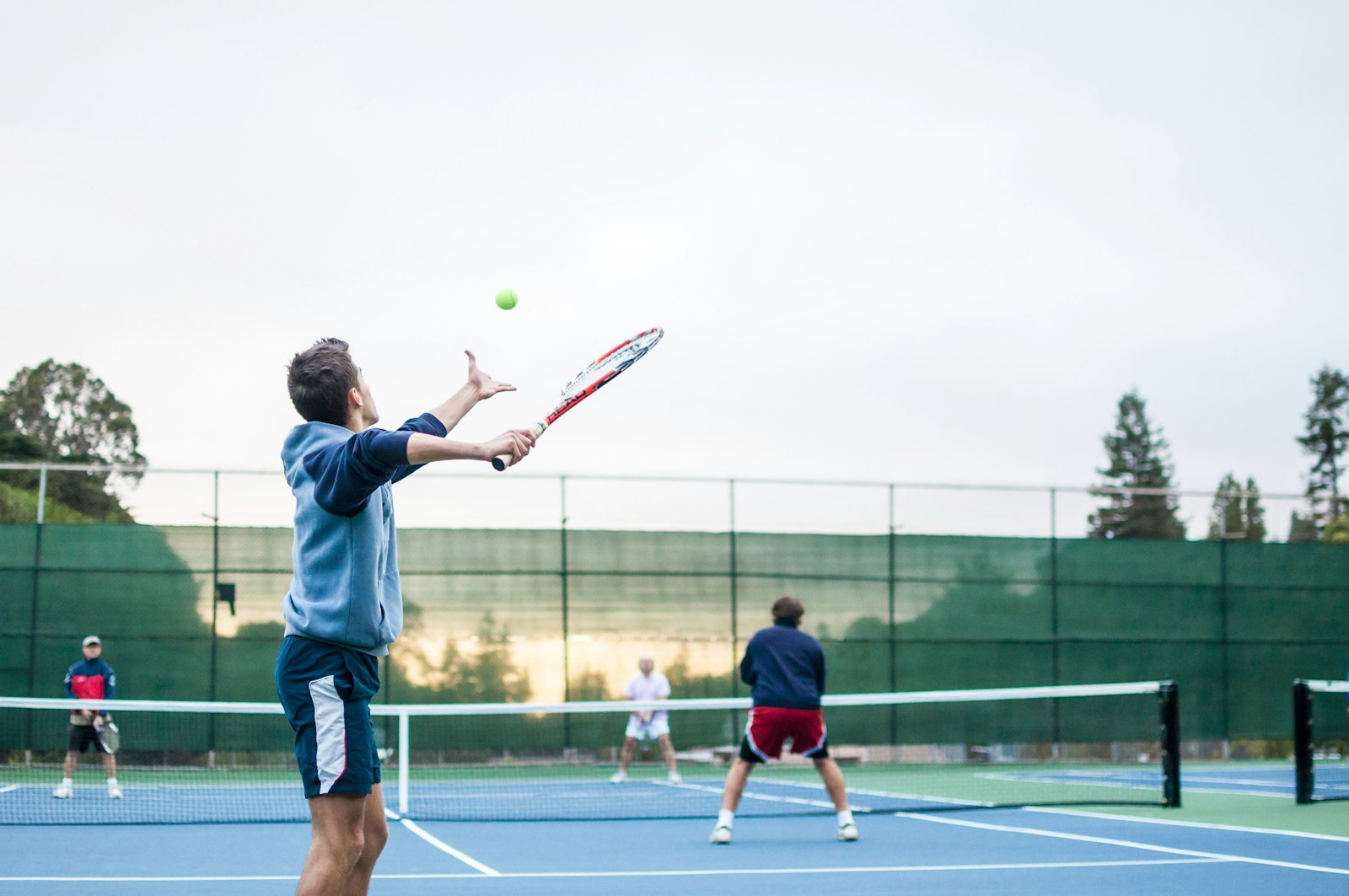My mom and adoptive father met on a tennis court in our apartment complex when I was five. I remember wandering around the outside of the fenced-in courts and watching the two of them play. I never got very good at tennis, but one thing that has stuck with me throughout my life is watching players of different skillsets practicing with one another. In tennis, this is called playing up and playing down, where one player is at a significantly different skill level where one of the two is clearly superior at the game. Playing up means challenging yourself against better opponents, pushing your limits, and enhancing your skills. Playing down involves competing with less skilled players, building confidence, and experimenting with new techniques. Playing this way in practice is strategic for both players, but these benefits aren’t just strategies for the court; they’re metaphors for personal and professional growth.
Jump straight to the TLDR
Playing Up: Embracing Challenges
Imagine facing a tennis player who’s significantly better than you. Every serve, every return demands your utmost focus and skill. It’s tough and often results in losses, but the experience pushes you to improve rapidly.
Real Life Applications:
- Career Advancement: Take on challenging projects and work with more experienced colleagues. Seek mentorship from industry leaders. These experiences force you to develop new skills and elevate your performance.
- Personal Growth: Surround yourself with people who challenge and inspire you. Engage in activities that push your boundaries. This might involve joining a group of skilled musicians or participating in high-level discussions. The aim is to stretch your abilities through exposure to excellence.
- Learning New Skills: Set ambitious goals when learning something new. For instance, if you’re learning a new language, try conversing with native speakers early on. The difficulty will accelerate your learning process.
Playing Down: Building Confidence and Sharing Knowledge
On the other hand, playing down in tennis involves facing less skilled opponents. This builds your confidence, allows you to experiment with new techniques, and gives you a chance to mentor others.
Real Life Applications:
- Leadership and Mentorship: Take the time to mentor those who are less experienced. Sharing your knowledge not only reinforces your own understanding but also fosters a supportive environment for others.
- Confidence Building: Occasionally engage in activities where you’re highly skilled. This boosts your confidence and reinforces your strengths. For example, if you’re good at public speaking, volunteer to present in front of less experienced groups.
- Experimentation and Innovation: In low-risk environments, you can afford to experiment with new ideas. This can lead to innovation and new ways of thinking. For instance, try out new processes in smaller projects before applying them on a larger scale.
Balancing Both Approaches
The key is to balance playing up and playing down. Constantly playing up can lead to burnout, while always playing down can cause stagnation. By strategically alternating between the two, you can create a path of continuous improvement.
TLDR (Too Long Didn’t Read)
The concepts of “playing up” and “playing down” in tennis provide valuable life lessons. “Playing up” involves challenging yourself against better opponents to enhance your skills, applicable in career advancement, personal growth, and learning new skills. “Playing down” builds confidence and allows you to mentor others, fostering leadership, confidence building, and innovation. Balancing both approaches ensures continuous improvement and avoids burnout or stagnation. These strategies are powerful tools for growth and success in all areas of life.

